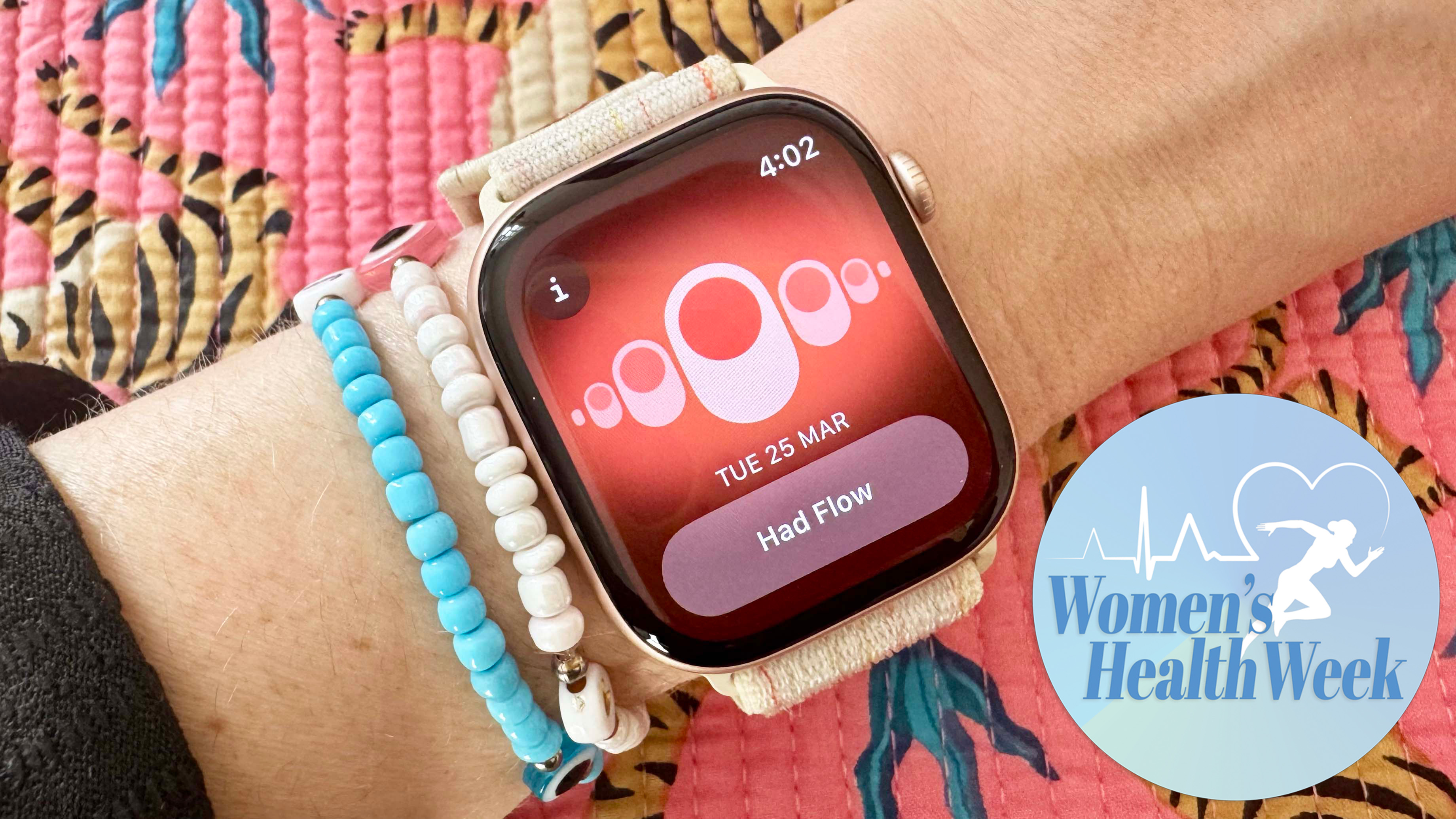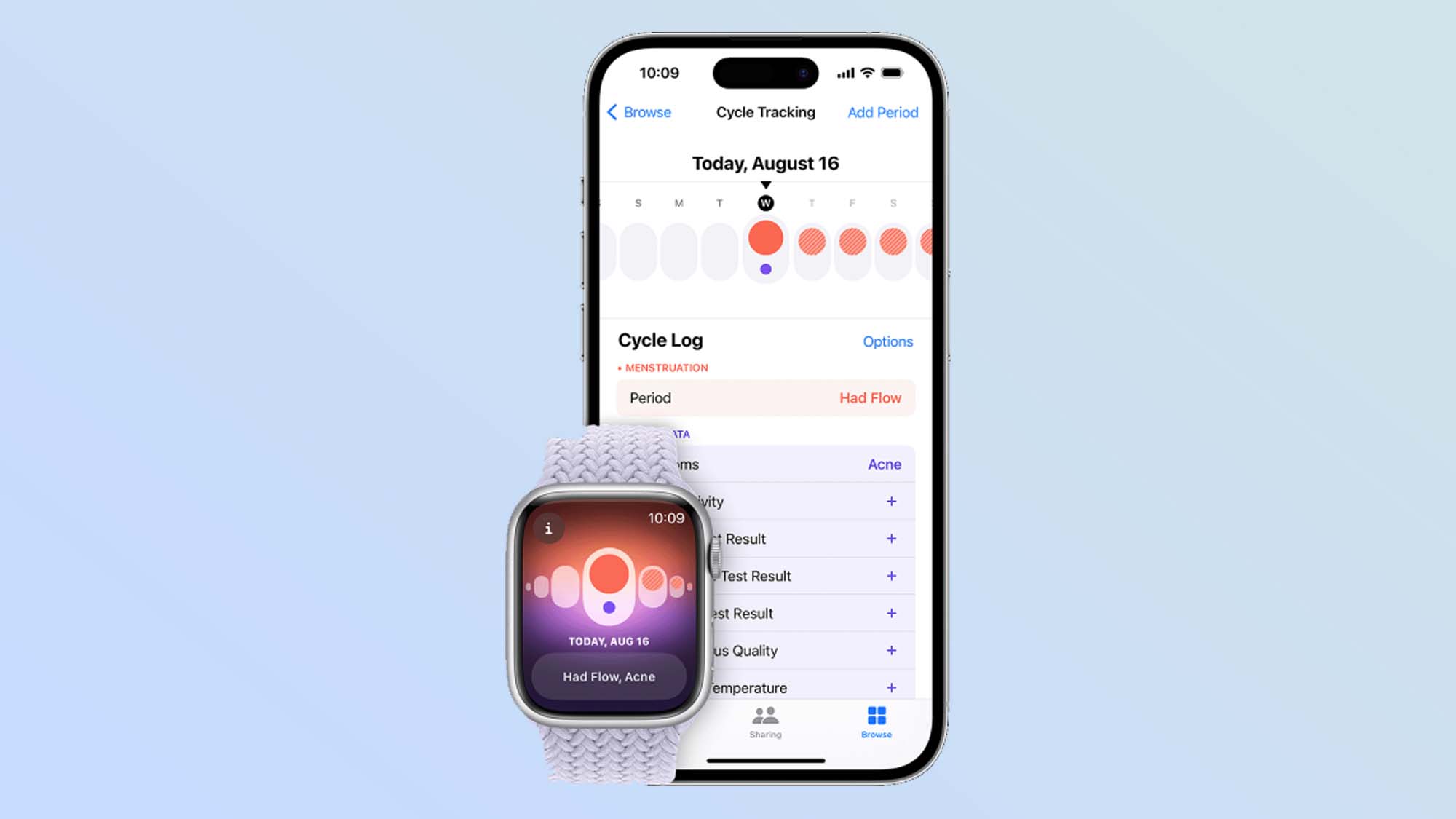How to set up menstrual tracking on your Apple Watch
Use your watch to track your cycle from your wrist.

For anyone who menstruates, periods can tell you a lot about your overall health. Everyone’s menstrual cycle will be slightly different, and cycles can vary from month to month.
Your menstrual cycle is a vital sign of wellbeing — it involves the brain, hormones, ovaries and uterus, and the best way to fully understand your cycle is to track it each month.
Once you know what’s normal for you and your body, you’ll be able to identify changes in your cycle and speak to a healthcare professional.
This article is part of Tom's Guide's Women's Health Week — a series of content that explores how technology and the right workouts can support and empower women through every phase of life.
Over the past few years, technology has evolved to allow you to track your menstrual cycle from your wrist. You can use one of the best Apple Watches to track your cycle and predict when you ovulate each month (this is only available on the Apple Watch 8, 9, 10 and Apple Watch Ultra).
Once you’ve been tracking for a while, your watch will also be able to alert you to any cycle deviations — changes in your cycle can be a sign of an underlying health condition, such as fibroids, PCOS, or thyroid disorders.
What can tracking your period tell you?
Most people who menstruate will have a 28-day cycle, but your cycle might be slightly longer or shorter. Tracking your period can help you know what’s normal for you and your body, and spot any changes, such as an unpredictable or heavy period, or skipping a period entirely.
If you’re trying to conceive, knowing when you ovulate can help you establish your fertile window — often the five days leading up to ovulation, the day of ovulation, and the day after.
Get instant access to breaking news, the hottest reviews, great deals and helpful tips.
Knowing where you are in your cycle can also help you understand your hormones, mood and energy levels. Your hormones change in every phase of your cycle, and as exercise impacts your hormonal balance, knowing where you are can help. Here’s a rough breakdown:
- During menstruation: progesterone and estrogen are at their lowest. This means you might feel less energetic and motivated, and find it more challenging to do fast-paced cardio that involves stamina and endurance.
- Follicular phase: your estrogen levels rise, giving you more energy, making it the best time to do high-intensity exercise.
- Ovulation: Your energy levels are also likely to remain high during ovulation, however, some people experience some bloating.
- Luteal phase: Your body releases progesterone to maintain the thickened lining of the uterus. The increase in progesterone may increase feelings of fatigue. Your body temperature also rises in the luteal phase, which can impact exercise — one study found that increased body temperature can impact your running performance, for example. Of course, this doesn’t mean you should avoid running; it just might be more challenging to hit fast paces in sessions.
How to set up menstrual tracking on your Apple Watch
In order to use your Apple Watch to track your menstrual cycle, you’ll need to ensure your Watch is running watchOS 6 or later.
- To get started, open the Health app on your iPhone
- Tap on the Browse tab, and tap Cycle Tracking
- Tap Get Started, and follow the onscreen steps to get set up.
- Once you’re set up, to enter a period on your iPhone, head to the Health app, scroll to the correct day, and click on the oval to log your period
- On your watch, open the Cycle Tracking app, swipe to the correct date, then log your period
You can also give your watch more information about factors that might be affecting your cycle, such as pregnancy, breastfeeding, or a contraceptive.
On your iPhone, head to the Health app, select Cycle Tracking and under the Your Cycles section, tap Factors. From here, you can enter a start date. You can end a Factor by tapping on it and clicking End.
What do the different colors mean when using menstrual tracking on your Apple Watch?
Once you’ve tracked a few cycles, your Apple Watch will be able to more accurately predict when your period might occur, as well as your predicted ovulation day and your fertile window. If you’re tracking a pregnancy, it can also predict your estimated due date.

Here’s what the different colors mean:
- Light blue: The light blue oval marks your predicted six-day fertile window
- Light purple: If you’re using the Apple Watch 8, 9, 10, or Apple Watch Ultra, you’ll be able to see a retrospective estimate of the day you ovulated
- Red stripes: This is the date your period is predicted to occur
- Solid red: The day you logged period days
- Purple dots: Days you logged information
- Light green: A day when you’ve logged a pregnancy
- Light green with dotted outline: A day when you may still be pregnant
- Dark green: Your estimated due date
How does the Apple Watch predict ovulation?
Ovulation prediction was launched on the Apple Watch 8 and Apple Watch Ultra, using wrist temperature readings to detect the biphasic shift that occurs when you ovulate.
During the follicular phase (the first phase of your cycle where the body is preparing to accept a fertilized egg), your body temperature is lower. After ovulation occurs, there is often an increase in temperature, called the biphasic shift.
Your body temperature will stay elevated during the luteal phase until your next period.
For accurate results, you’ll need to wear your watch most nights and remember to put your watch into Sleep Focus with Sleep Tracking enabled. After wearing your watch every night for two cycles, you’ll be able to see retrospective ovulation estimates.
The Apple Watch also uses your heart rate to give you a more accurate estimate of your fertile window and period. Your resting heart rate is lower during the follicular phase and will begin to increase around the day of ovulation. It continues to rise until the middle of the luteal phase, before beginning to drop back to your baseline.
You can also connect your Apple Watch to period tracking apps like Natural Cycles and allow the watch to share your body temperature data to predict ovulation and fertile windows.

Jane McGuire is Tom's Guide's Fitness editor, which means she looks after everything fitness related - from running gear to yoga mats. An avid runner, Jane has tested and reviewed fitness products for the past five years, so knows what to look for when finding a good running watch or a pair of shorts with pockets big enough for your smartphone. When she's not pounding the pavements, you'll find Jane striding round the Surrey Hills, taking far too many photos of her puppy.
You must confirm your public display name before commenting
Please logout and then login again, you will then be prompted to enter your display name.
